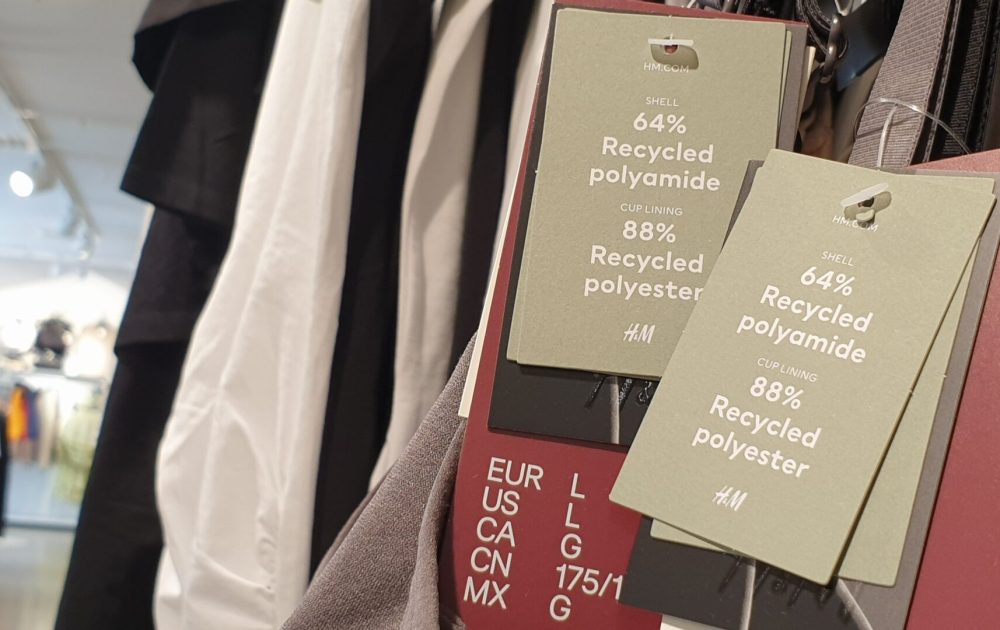Our test tells you which everyday chemicals you've recently come into contact with, and easy steps you can follow to reduce your exposure to them.
Sustainable clothing without chemicals

Fashion Revolution Week is an annual campaign that brings together the world’s largest fashion activism movement for seven days of action during April. One of its major activities is the publication of the Transparency index which monitors the fashion industry’s social and environmental policies, practices and impacts, in their operations and supply chain.
But what about chemicals in our clothing?
25% of global chemical output originates in the fashion industry. 8000 synthetic chemicals are used in clothing, that’s 62% of all fibres used.
We buy 60% more clothing than we did 20 years ago. There’s been real progress in the development of more sustainable fashion with brands changing their supply chains towards more ecologically and socially responsible models.
But it’s not always easy to understand what chemicals are being used to manufacture your clothes, and any potential hazards they might be posing to your wellbeing.
Synthetic fibres
Derived from petrochemicals, synthetic fabrics fall into 4 primary fabric groups – polyester (the most common) acrylics, nylon, and lycra.
Polyethylene terephthalate (PET) is the thermoplastic polymer used in fabrics known as polyester. It is the world’s most popular manufactured fabric. It has a high wear resistance and recyclability (recycled polyester clothing is made using plastic bottles). PET has become a major source of plastic pollution due to its wide usage and the time it takes to break down – it is a ‘Forever chemical’.
Polyester samples tested contain antimony at detectable levels, a known carcinogen. Regular exposure to polyester fabrics such as sportwear and bedding might present a health risk, through skin contact. Polyester is best avoided for infants who like to chew.
Cotton
Natural fibres are free of synthetic chemicals, but it’s worth remembering that non-organic cotton is grown using pesticides. Organic cotton is grown without pesticides and uses less energy and water, and releases fewer greenhouse gases, making it a more sustainable choice. To learn more about organic cotton visit the Soil Association.
Environmental toxins can lurk in polyester and cotton fabrics, even organic cotton, where chemicals may leach into the water course.
Waterproof clothing
Teflon and Perfluorochemicals (PFCs) are used in the manufacturing process by many clothing brands to add durability, water resistance and wrinkle free effects to clothing.
Per- and polyfluoroalkyl substances (PFAS) are used for water and stain resistance. PFAS are considered to be an endocrine disrupting group of chemicals. They are used by thousands of clothing brands, but some leading brands including H&M and Levi’s have removed PFAS from their manufacturing processes due to health concerns. There is an industry wide call to ban PFAS in Europe.
PFAS are Forever chemicals that pollute water supplies.
Can we absorb synthetic chemicals from clothing?
Skin is the body’s organ, and body heat enhances the release of chemicals from synthetic fibres and absorption into the body. Studies have found that clothing can expose us to harmful chemicals by skin contact. The effects are not fully understood yet, but levels detected are described as “non-negligible” and raise questions about potential cancer risks for wearers.
How can you reduce your exposure to chemicals in clothing?
If you are concerned about chemicals lurking in your clothes, choose garments made with natural fibres such as organic cotton and wool. Wear natural fibres against the skin if the top layer has been waterproofed, including footwear.
Allow dry cleaned clothes to air thoroughly before wearing to allow the chemical smell to escape. Hang them unwrapped in a well-ventilated area such as a garage or unused room with the door closed and ventilated for a week or two.
Avoid printed graphics on clothes including children’s clothing and socks are a source of exposure to benzothiazoles (BTHs) and benzotriazoles (BTRs). These chemicals are classed as “probably carcinogenic” by the IARC.
Check brands that appear on this list of outdoor clothing brands that are PFAS free and check your Fashion Footprint by taking this quick online quiz.
Reducing microplastic leeching in your washing cycle
Synthetic clothing releases thousands of microplastic particles during a washing cycle, and with up to 50% of our clothing made from synthetic fibres it’s hard to avoid. Abrasion in the washing cycle can release more microplastic particles, so separating textiles that might rub against each other such as denim can help reduce what escapes into your wastewater. Washing at lower temperatures can also help.
Tumble drying clothes also accelerates the release of microplastic particles, so air dry where possible.
Bear in mind that nightwear for children under 3 years old is exempt from the Nightwear Safety regulations, meaning that manufacturers cannot use flame retardants.
To learn more about sustainability in the fashion industry search #FashionRevolutionWeek on social media.
Useful Links
A closer look at what’s in synthetic clothing.
Sustainable Fashion for the earth
Shop clothes sustainably guide
How to reduce shedding microplastics from your laundry
Consumer guide to PFAS free clothing and shoes